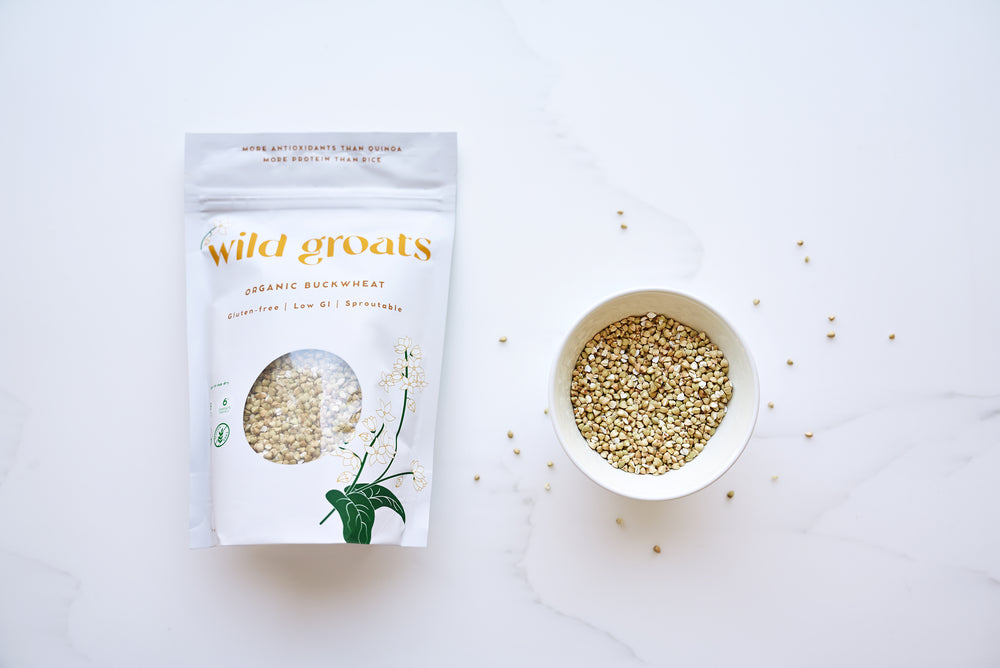You may also like
FAQs
Even though it's called "buckwheat," it's not really related to wheat at all and doesn't have any gluten.
Buckwheat is usually considered a grain, but it's actually a seed! It comes from this plant called Fagopyrum esculentum. Buckwheat has similar properties as a grain, which is why it is considered a grain alternative like quinoa. You can do lots of things with Wild Groats, like turning it into flour, making porridge, or using it instead of rice or other grains in your cooking.
Raw buckwheat groats are more versatile in our opinion! They can be sprouted and blended easily into flour while toasted buckwheat cannot be sprouted and is typically not used for flour. Raw buckwheat has a mild nutty and slightly earthy undertone, while toasted groats (also known as kasha) bring a distinct nutty and hearty flavor. Wild Groats can easily be turned into Kasha by toasting them in the oven or stovetop.
Absolutely! Wild Groats is a complete protein source (contains all 9 essential amino acids)
Whether buckwheat groats are suitable for a paleo diet depends on the person's viewpoint.
The paleo diet focuses on foods our ancient ancestors ate, like meat, veggies, fruits, and nuts, while avoiding grains and processed foods. Some paleo followers avoid buckwheat because it wasn't eaten by ancient people and contains lectins. However, others include buckwheat in their paleo diet because of it's high nutrition profile (rich in protein, vitamins and minerals), is not a grain but a seed, and is gluten-free.
Check out our instructions on how to cook Wild Groats HERE.
Rinsing Wild Groats before cooking is not required but is highly recommended. Even better is soaking Wild Groats in clean, filtered water for a minimum of 20 minutes, then rinse well afterward using a fine mesh colander or sieve. We recommend this because, like many seeds, nuts, and legumes, Wild Groats contain phytic acid, an enzyme inhibitor that reduces the ability for nutrients to be absorbed. Through rinsing or soaking, this will naturally break down the phytic acid and deactivate the enzyme inhibitors, improving nutrient absorption and digestibility.
Sprouts are high in fibers, micronutrients, and phytonutrients and have higher concentrations of vitamins and minerals than the non-sprouted or cooked versions.
When eaten raw, they are richer in enzymes, making them more digestible and increasing the bioavailability of their nutrients. They are also low in calories, leaving you feeling lighter and cleaner. Wild Groats are known for being rich in antioxidants, and sprouted Wild Groats are even higher in antioxidants and minerals such as magnesium.
When it comes to conventional grains (rice, wheat, corn, oats)... YES! Wild Groats outperforms conventional grains on almost every measure of healthfulness. Packed with vital minerals and nutrients, and a complete protein source (containing all 9 essential amino acids), Wild Groats is a whole-food version of a multi-vitamin.
Looks like an unhulled buckwheat seed snuck it's way into your bag! Little rascal ;) Not to worry, you can simply pick it out and toss it. Or if you accidentally cooked it, its perfectly fine to eat as the outer shell of the groat (which gives it its darker color) softens and is chewable once cooked.








